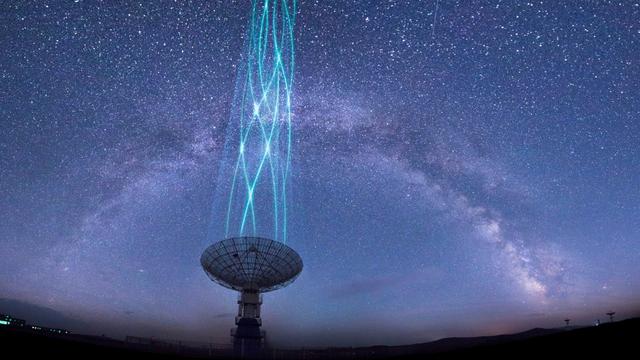Astronomers are puzzled by a strange radio signal from space that repeats every hour.
Researchers at the University of Sydney and CSIRO, Australia’s national science organization, have discovered a neutron star that is seemingly rotating slower than any neutron star previously detected. Out of more than 3000 neutron stars observed to emit radio waves, this star is the slowest rotator found. The study has been published in the Nature Astronomy journal with the following details.
From the University of Sydney Institute for Astronomy, the lead author, Dr. Manisha Caleb, said that the discovery of a neutron star candidate sends out radio pulses in such a way is incredibly rare. It is quite impressive how the same signal is repeated at such a slow pace.
This strange neutron star radiates in the radio band at a rate that does not have the radio neutron star paradigm. This discovery provides new insights into the highly complex life cycles of stars and other astronomical phenomena.
The final phase in the life of a gigantic stars, which are roughly 10 times the mass of the sun, is the exhaustion of their fuel supply followed by a spectacular supernova explosion. What is left is an immensely compact stellar remnant, which is 1. Four times the mass of the sun congealed into a sphere that measures only 20 kilometers in diameter.
This is so condensed that the electrons enter into protons and hence you have an object made of enormous numbers of neutrons – all of them neutrally charged. Therefore, a neutron star is formed.
In a sensational revelation, astronomers of the University of Sydney and CSIRO have come across an unusual compact object. Unlike the short periods which are frequently associated with neutron stars and which range from milliseconds to seconds, this object rotates in about forty-nine minutes and fifteen seconds. This incredible discovery was achieved using CSIRO’s Australian Square Kilometre Array Pathfinder (ASKAP) radio telescope at Wajarri Yamaji Country, Western Australia.
The specific design of ASKAP allows the telescope to detect events that scientists did not know to look out for in the first place. Dr Emil Lenc, a co-lead author of the paper and a scientist at CSIRO, said that ASKAP persistently scans the sky and, without its survey, this rather odd object would have remained undiscovered. This discovery further underlines the critical contribution that ASKAP makes to advancing astronomy as a field of study.
The origin of this continuous signal still continues to be a mystery to date, although white dwarfs and neutron stars were considered as the most probable culprits. The way that this particular entity oscillates between three states of emission and is completely different from another. It was the MeerKAT, a radio telescope located in South Africa, that was used to differentiate between these two states. According to Dr. Caleb, if the signals did not emanate from the same point of the sky then he would not have believed that they are both originated from the same source.
While there is evidence that a single white dwarf that possesses a highly-advanced magnetic field might be behind the signal, it is nonetheless odd that no highly-magnetic white dwarfs are observable within the area. However, one might need to have an intense magnetic field neutron star that would cause the observed emissions to be explained with elegance.
Reference: Caleb, M. et al. An emission state switching transient with a 54 minute period’, Nature Astronomy (2024). DOI: 10.1038/s41550-024-02277-w
Do not forget to share your opinion with us to provide you with the best posts !




0 Comments